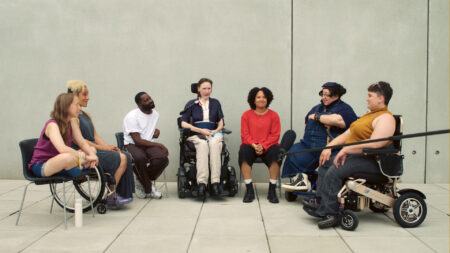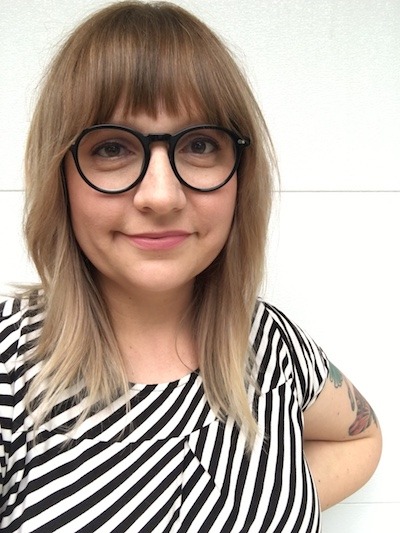Stacey Abramson joins us on the magazine as the second Educator-in-Residence for our July / August issue, “Inspired by a True Story.” The issue investigates the line separating truth and fiction in both contemporary art and documentary film projects. Abramson is herself a video artist, as well as a writer and visual arts educator at Maples Collegiate in Winnipeg, Canada. She joined the Art21 Educators program last year, participating in the Year 6 cohort.
Why do you believe the thinking and practices of contemporary artists are important to incorporate in the classroom? What do students get out of it that they might not otherwise?
Contemporary art is a critical lens for understanding ourselves and the world. It is responsive to the time and reflects the motions and rifts in society. When I ask new students who their favorite artist is, they often cannot think of one or list Picasso or Van Gogh. It’s the same issue when it comes to what students think art is without contemporary art and pedagogy: realistic pencil-rendered portraits. Art education has historically explored technique and expression without questioning the rich layering of history that contemporary art and practices offer and explore. I’ve used the analogy of teaching science with a textbook from the nineteenth century to explain why we need to bring contemporary art into not only the art room, but all classes.
What happens when you show students artists who look like them? Artists who think like them? What happens when you show them artists who experiment, take risks and learn through failure? It’s time for a revolution in art education. (I wrote a manifesto on contemporary art education as part of my work in the Art21 Educators program this year to try to bring to light some of these issues.)
The students in our classrooms today have new ways of communicating with and understanding the world around them that are rapidly changing. They are witnesses to the power of art for change through the work of artists like Theaster Gates, Carrie Mae Weems, Doris Salcedo and Alfredo Jaar, and this in turn invites them to think about what art is capable of in their own lives. How do they make meaning of their place? How can they make a mark or a difference in themselves, their community—both local and global? Using contemporary art in my classroom allows my students to see not only themselves in the reflection of artworks, but also shows them the potential for their own growth as an artist and individual. Many of the students at my school do not go on to art school, which is why it’s important to teach the investigations, reclamation and possibilities for new understandings that contemporary art offers.
Why were you initially drawn to the Art21 Educators program?
I had always been a fan of Art21 since my time in art school in the early ’00s and had made the films a part of my teaching when I first started in the classroom. A colleague here in Winnipeg told me about the program and I was thrilled to know it existed. I happened to be going to the National Art Education Association conference in New Orleans to present on Inquiry-Based Learning, and saw that the Art21 Educators were also presenting. I remember sitting in the audience, my jaw dropping as each educator stood at the podium to talk about contemporary art education in ways that made me feel inspired, renewed and reaffirmed in my thinking about my teaching practice. I applied as soon as applications were out in 2016 and was convinced I wasn’t going to get in—I’m honestly still in disbelief that I get to be a part of this amazing program.
Read the rest of Stacey’s interview on the Art21 Magazine, and keep an eye out for her education posts throughout the July/August issue, “Inspired by a True Story.”


